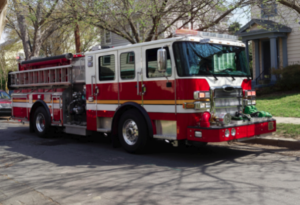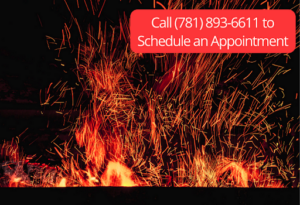The Critical Jobs of a Chimney Damper
Summer is coming to a close. When the leaves start to change, Old Man Winter isn’t far behind. It is in these colder months when fireplaces and chimneys are used the most. Before building a fire in your fireplace, one fixture of your chimney stands out from all the others. That fixture is the chimney damper. This, and other chimney repairs must be made before you use your fireplace.
 A damper is a piece of metal above the firebox that controls where the smoke and ash go while the fire is burning. It opens by a handle or pulling of a chain to let the heat and flying embers escape. When the damper is closed, it can help keep the cool air in your home and is an extra layer of protection against small animals getting into your house. If your damper is stuck in either the open or closed position, you are putting your home, and more importantly, your family at risk.
A damper is a piece of metal above the firebox that controls where the smoke and ash go while the fire is burning. It opens by a handle or pulling of a chain to let the heat and flying embers escape. When the damper is closed, it can help keep the cool air in your home and is an extra layer of protection against small animals getting into your house. If your damper is stuck in either the open or closed position, you are putting your home, and more importantly, your family at risk.
Rusted Open
Several situations can occur if your damper is stuck in the open position due to rust or malfunction. First, an open damper is an invitation, inviting rodents, birds, and in some cases, snakes to take refuge in your chimney.
Homeowners are also throwing away money on energy bills. That open damper is allowing the heated air in your house out. You might as well keep a window open all winter. If you use central air in your home during the summer, the cool air escapes through that same opening.
 Closed damper
Closed damper
About the only positive with a permanently closed damper is you are keeping animals out. However, leaving the damper closed can lead to severe damage to your home and family. If a homeowner lights a fire with a closed damper, all the smoke produced will have nowhere to go except into your home. Smoke damage is costly to remove. Secondly, and probably the most important, is your fire produces a deadly gas. You can’t see or smell it, a toxic gas known as Carbon Monoxide. Allowing smoke to enter your home is bad enough, but Carbon Monoxide can kill just as quickly as a house fire.
Homeowners, if you have not had a chimney inspection done in a while, don’t procrastinate any longer. Allowing the highly trained technicians from Northeastern Chimney to come into your home and inspect your chimney is a wise choice.
Northeastern Chimney, LLC has been servicing and repairing chimneys in Central Connecticut for almost 40 years. We are proud to be a contributing partner to the community. We also appreciate all the wonderful chimney sweeping reviews our customers have left on our website.
Every member of our staff is knowledgeable and skilled in handling all types of chimney issues. We do general inspections as well as cleaning, repairing, and servicing your chimney.
If you own an older home and you are not sure about the condition of your chimney, please give us a call; we are always glad to help.
Northeastern Chimney, LLC
37 Cody Street
West Hartford, Connecticut 06110
Phone: 860-233-5770
This post first appeared on https://www.mychimney.com

 What To Do If There Are Sparks Coming Out of Your Chimney
What To Do If There Are Sparks Coming Out of Your Chimney



 Task #1: Have your chimney inspected once a year
Task #1: Have your chimney inspected once a year Damage to chimneys and their components doesn’t get better on its own. Rather, it progresses to the point that the chimney is no longer safe to use or live around.
Damage to chimneys and their components doesn’t get better on its own. Rather, it progresses to the point that the chimney is no longer safe to use or live around.